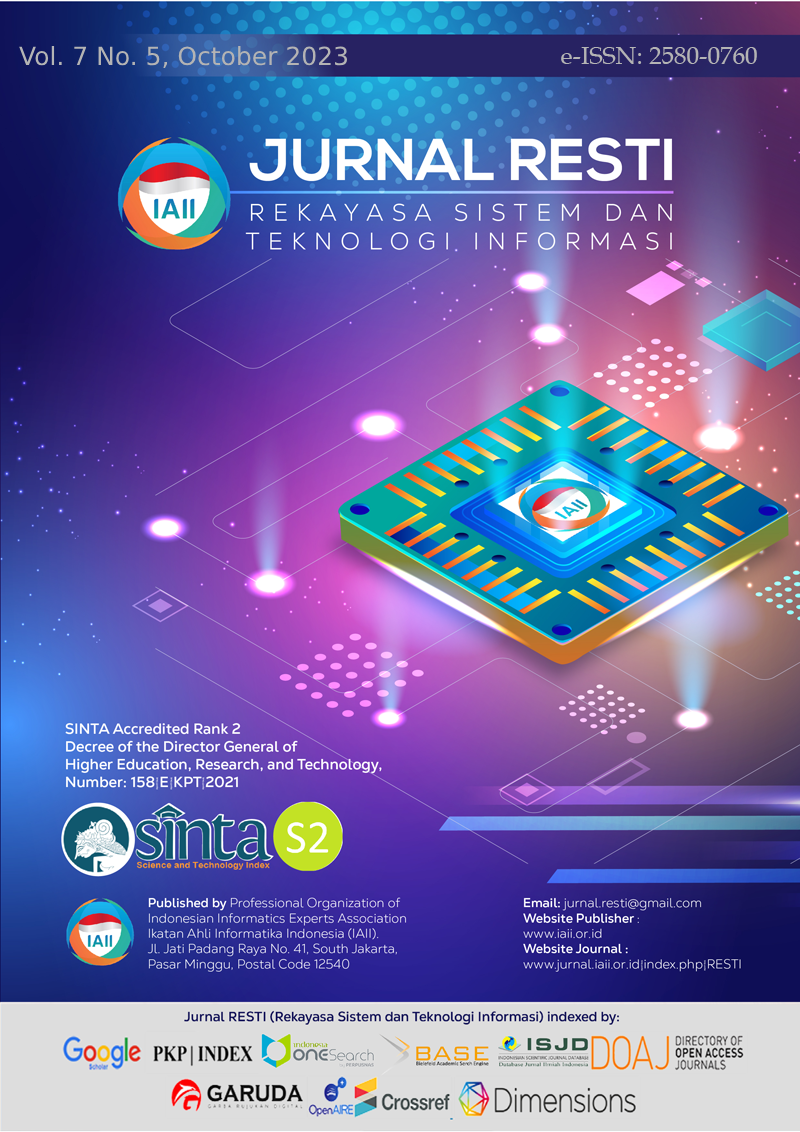K-Means Algorithm Implementation for Project Health Clustering
Abstract
Indonesia has several companies that are involved in the telecommunications sector. Various projects run in parallel to support the success of telecommunications companies. The potential of a project can increase company revenue and productivity. On the other hand, there are some risks that need to be considered for every project when it is about to start. Project data is recorded from start to finish so that the project's progress and improvements can be monitored and analyzed. As the project runs, the project team at one of Indonesia's telecommunication companies, which is responsible for the processes leading to project success, requires a project health category. Therefore, this study is conducted to develop a clustering project health process, which is included in a type of unsupervised learning that runs on unlabeled data. One of the clustering algorithms is K-Means, which groups data based on similar criteria. Researchers also use dimensionality reduction with the principal component analysis (PCA) method to determine its impact on the clustering process with the K-Means algorithm. From this study, the researcher obtained three groups or project health categories, consisting of groups 0, 1, and 2. The evaluation results with the Calinski-Harabasz index showed that the K-Means model in the PCA dimensionality reduction data performed better than the standard K-Means model with a Calinski-Harabasz index value of 55633,12776405707, which is higher than 25914,578262576793.
Downloads
References
M. Hopmere, L. Crawford, and M. S. Harré, “Proactively Monitoring Large Project Portfolios,” Proj. Manag. J., vol. 51, pp. 656–669, 2020.
A. A. Wael, A. Elyamany, and A. Elhakeem, “Classification of Evaluation Metrics for Project Baseline Schedules,” Int. J. Eng. Adv. Technol., vol. 10, no. 1, pp. 235–239, 2020, doi: 10.35940/ijeat.c5456.1010120.
T. Jo, Machine Learning Foundations: Supervised, Unsupervised, and Advanced Learning. 2021.
M. Mohri, A. Rostamizadeh, and A. Talwalkar, Foundations of Machine Learning. The MIT Press, 2018.
M. Garzon, Dimensionality Reduction in Data Science. 2022.
O. Nasraoui and C.-E. Ben N’Cir, Clustering Methods for Big Data Analytics. 2019.
F. Aksan et al., “Clustering methods for power quality measurements in virtual power plant,” Energies, vol. 14, no. 18, 2021, doi: 10.3390/en14185902.
M. Zubair, M. Asif Iqbal, A. Shil, E. Haque, M. Moshiul Hoque, and I. H. Sarker, “An Efficient K-Means Clustering Algorithm for Analysing COVID-19,” Adv. Intell. Syst. Comput., vol. 1375 AIST, pp. 422–432, 2021, doi: 10.1007/978-3-030-73050-5_43.
Fairleigh Dickinson University, “Purchasing Policies and Procedures,” no. October, 2019.
M. Ashika and V. Monisha, “A Material Management in Construction Project Using Inventory Management System,” Int. J. Mod. Trends Sci. Technol., vol. 6, pp. 32–40, 2020, doi: 10.46501/IJMTST060506.
One Finance, How to Receipt Purchase Orders. The London School of Economics and Political Science, 2019.
R. Jafari, Hands-On Data Preprocessing in Python. Packt Publishing, 2022.
E. Antony, N. S. Sreekanth, R. K. Sunil Kumar, and T. Nishanth, “Data preprocessing techniques for handling time series data for environmental science studies,” Int. J. Eng. Trends Technol., vol. 69, no. 5, pp. 196–207, 2021, doi: 10.14445/22315381/IJETT-V69I5P227.
Abhishek Thakur, Approaching (Almost) Any Machine Learning Problem. Abhishek Thakur, 2020.
A. Zheng and A. Casari, Feature Engineering for Machine Learning: Principles and Techniques for Data Scientists. O’Reilly Media, 2018.
G. R. Naik, Advances in principal component analysis: Research and development. 2018.
K. Sud, P. Erdogmus, and S. Kadry, Introduction to Data Science and Machine Learning. Rijeka: IntechOpen, 2020.
I. Zada et al., “Performance Evaluation of Simple K-Mean and Parallel K-Mean Clustering Algorithms: Big Data Business Process Management Concept,” Mob. Inf. Syst., vol. 2022, 2022, doi: 10.1155/2022/1277765.
N. Zumel, J. Mount, J. Howard, and R. Thomas, Practical Data Science With R. Manning, 2020.
Copyright (c) 2023 Jurnal RESTI (Rekayasa Sistem dan Teknologi Informasi)

This work is licensed under a Creative Commons Attribution 4.0 International License.
Copyright in each article belongs to the author
- The author acknowledges that the RESTI Journal (System Engineering and Information Technology) is the first publisher to publish with a license Creative Commons Attribution 4.0 International License.
- Authors can enter writing separately, arrange the non-exclusive distribution of manuscripts that have been published in this journal into other versions (eg sent to the author's institutional repository, publication in a book, etc.), by acknowledging that the manuscript has been published for the first time in the RESTI (Rekayasa Sistem dan Teknologi Informasi) journal ;







